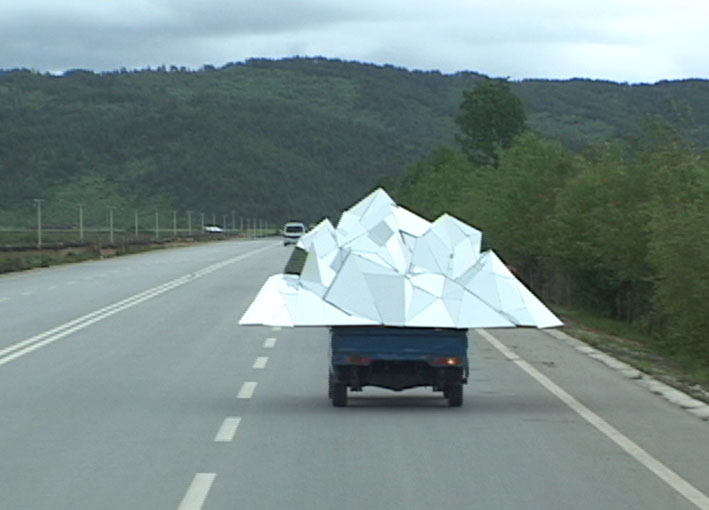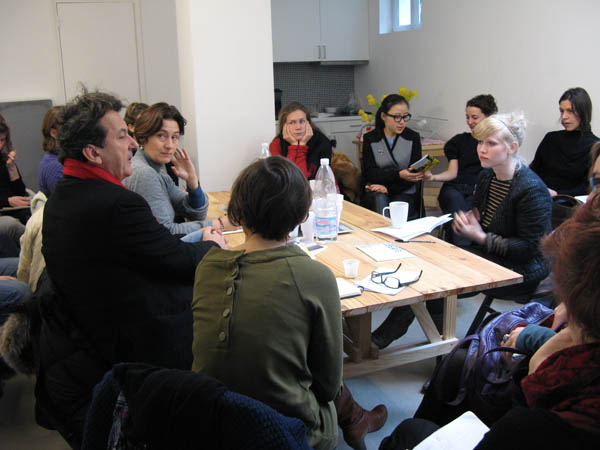![24 hour curatorial concierge service, [Artoons, 2008–2022 series]](https://kadist.org/wp-content/uploads/2023/09/24-hour-concierge-desk-scaled.jpg)
© » KADIST
Pablo Helguera
Drawing & Print (Drawing & Print)
A sly sense of humor is key in Pablo Helguera’s long-running Artoons series, one that includes ~1500 drawings made over ten years. It’s no secret that the artworld tends to take itself too seriously, so it’s no surprise that Helguera’s project has developed a large following over the past decade—providing much needed comic relief.. Helguera grew up making and exchanging drawings like these with his father and brother, but never made drawing a part of his public practice until in 2008, when he began periodically posting what came to be known as ‘Artoons’ on Facebook. The series caricatures and lampoons agents and events in the artworld, combining just enough visual reference along with a caption.

© » KADIST
Ryan Gander
A vehicle without light is a group of more personal photographs. This includes an image of a pirate radio in the 1960s, a story from the BBC website and the photo of Mary Aurore. Mary Aurore, is in fact a character he invented whose identity is impossible to determine but who appears in various works.

© » KADIST
Lenka Clayton and Phillip Andrew Lewis
Five Hundred Twenty-Four, a single-channel video installation by Lenka Clayton and Phillip Andrew Lewis, features singers from over twenty Cleveland-area choirs counting numbers in an iterative process: one person sings “one”, then two people sing “two”, and so forth, to 524. Each choir was filmed separately, and the artists weave together the audio while the video features each choir individually. The juxtaposition of different contexts in which singing occurs functions as an embedded sociological study of various communities throughout the region.

© » KADIST
Lola Gonzàlez
In Summer Camp , Lola Gonzàlez filmed a group of friends at the home of her parents in the department of Charente (France) in the process of transforming the house into a training camp. They are doing exercises with the furniture as if they were training to fight against something yet to happen. Gonzàlez ’s films persistently evoke the same fear of an external threat, one which is never explained but which can be placed in relation with the current political situation and social tension.

© » KADIST
Jonathan Hernández
In line with Hernández’s interest in catastrophe, Vulnerabilia (choques) is a collection of images of shipwrecks and Vulnerabilia (naufragios) collects scenes of car crashes. The artist has said that the appropriation of popular imagery is a way for him to take pictures without a camera and to register the things that happen in the everyday as visual essays that evidence the fragility of the world.

© » KADIST
John Houck
John Houck’s multi-layered photographic compositions immortalize nostalgic objects from the artist’s childhood, manipulated in the studio and in post-production into unreal still-life arrangements. Stamp -X, Stamp -Y consists of a careful collage of uneven scraps of paper. On their versos, these fragments of blue, white, and manila papers hold the artist’s childhood stamp collection; turned as they are, these shards of envelope become planes of colors that Houck manipulates in a vaguely grid-like fashion.
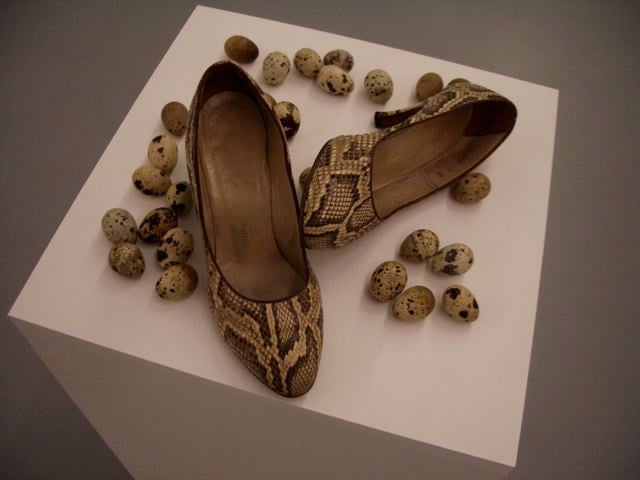
© » KADIST
Hans-Peter Feldmann
The types of objects Feldmann is interested in collecting into serial photographic grids or artist’s books are often also found in three dimensional installations. Verging on a form of fetichism, his shoe collections are a case in point and indeed, for some exhibitions, he even asked gallery employees for their shoes. Against authorship and the commodification of art, he never gives titles or dates to his works which have infinite edition possibilities.

© » KADIST
Hans-Peter Feldmann
The types of objects Feldmann is interested in collecting into serial photographic grids or artist’s books are often also found in three dimensional installations. Hats and photographs are regularly part of his appropriations and arrangements. He famously made numerous trips to England in search of old photographs when he was an antique dealer, and then worked in a gift store with his wife when he left the art world in the 1980s.

© » KADIST
David Berezin
In Are You Lonely Mr. Claus? , a bottle of whiskey, a red rose, a lit cigarette, and an assembly of kitschy Christmas memorabilia (Santa’s hat, a sugar cane) are displayed side-by-side with artifacts that denote some sort of (typically Californian?) summer leisure time (sea shells, sun block and goggles).

© » KADIST
David Berezin
In Eric Goes to Jail , a coffee maker, red lipstick, a pile of cash, some exotic parakeets, a brassiere, a bow tie, and a stained napkin scribbled with a phone number constitute clues to unraveling a mystery and invite the viewer to speculate about the events of the preceding night.

© » KADIST
Mladen Stilinovic
The Exploitation of the Dead cycle is composed of a very large number of elements which the artist reorganizes differently every time. The installation is presented like a “parade of objects”, with images whose historical role has been suspended or their meaning has changed. The references have become lost, through repetition the works have become banal.
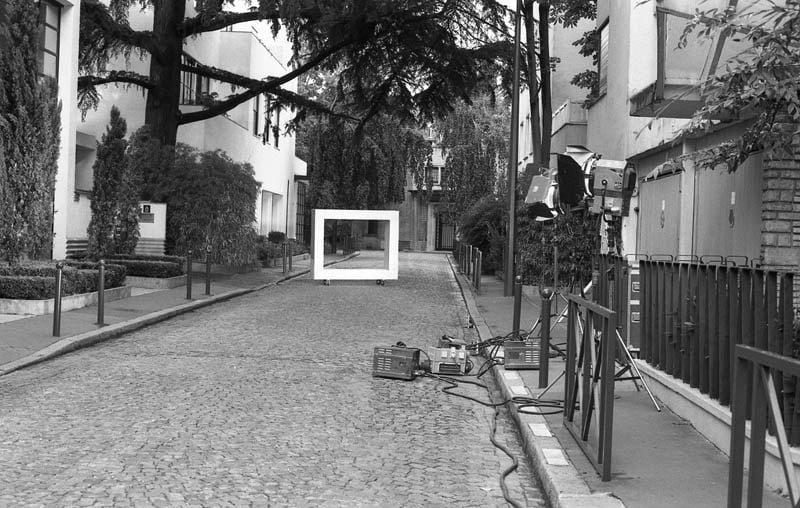
© » KADIST
Charlotte Moth
Charlotte Moth asked the art critic Francesco Pedraglio to write a text in response to the Man Ray film “Les Mystères du Château de Dé”, the decor of which was the Villa Noailles, built by Mallet-Stevens. Pedraglio’s text was then displaced since the artist attributed it to her own photographs taken on the rue Mallet-Stevens in Paris. A percussionist gave a audio response to the film during the opening at the Halle fu?r Kunst in Lüneburg, in 2010.

© » KADIST
Gabriella and Silvana Mangano
There is no there by Gabriella and Silvana Mangano is a black and white looped video with sound, in conjunction with a live performance. The work is inspired by the Blue Blouse, a political propaganda theater movement which spread across the Soviet Union in the mid-1920s. More specifically, the work takes the form of ‘Living Newspapers’, which were performances based on topical news events.
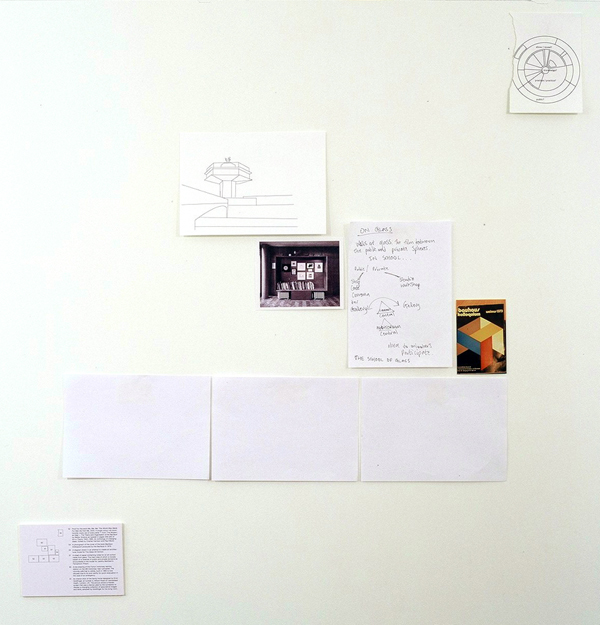
© » KADIST
Ryan Gander
You see without light is a group of photographs around the theme of Bauhaus. This includes a reference to one of Gander’s works which is the Bauhaus manifesto without dots on the letter ‘i’, as well as drawings of his ideal art school.

© » KADIST
Jeffrey Vallance
Vallance’s Rocket is a vibrant picture in which masses of color and collage coalesce into a central vehicle, yet the whole surface seems lit with the roar of space travel. This varied use of media has enabled the artist to bring all of the life, energy, and objects he works with into a single image.

© » KADIST
Jennifer Bornstein
Collectors’ Favorites is an episode of local cable program from the mid-1990s in which ordinary people were invited to present their personal collections—a concept that in many ways anticipates current reality TV shows and internet videos. When it comes her turn to “perform,” Bornstein displays mundane and disposable—but elaborately archived or framed—consumer objects such as coffee lids, plastic straws, candy wrappers, and product labels. Through the medium of public broadcasting, then, she makes visual the frequently overlooked but massive cultural penetration of advertising, and its proliferation of “throwaway culture” via images.

© » KADIST
Alexandre da Cunha
Glaze (Savana) (2005) is an assemblage of found materials: a car wheel, a tire, and a wooden plinth of the type traditionally used to display sculpture. It directly engages with the readymade, a subject that Alexandre de Cunha takes up throughout his practice, often inflecting it with a tropical, and South American–inspired materiality and painterly style that could potentially come across as a stereotype. Here, da Cunha transforms the component parts into a composition that highlights often-overlooked materials of artistic production and cultural mass-production.
David Berezin
David Berezin takes advantage of the language of popular culture and our overexposure to it...
Ryan Gander
- location: Chester, United Kingdom
- year born: 1976
- gender: male
- nationality: British
Hans-Peter Feldmann
- location: Düsseldorf, Germany
- year born: 1941
- gender: male
- nationality: German
- home town: Dusseldorf, Germany
John Houck
- year born: 1977
- gender: male
- nationality: American
- home town: South Dakota
Alexandre da Cunha
- location: London, United Kingdom
- year born: 1969
- gender: male
- nationality: Brazilian
- home town: Rio de Janeiro, Brazil
Charlotte Moth
Charlotte Moth has been constituting an image bank since 1999...
Mladen Stilinovic
Mladen Stilinovic is one of the most significant representatives of neo-avant-garde art in Central and Eastern Europe...
Jennifer Bornstein
- location: United States
- year born: 1970
- gender: male
- nationality: American
- home town: Seattle, Washington
Gabriella and Silvana Mangano
Gabriella Mangano and Silvana Mangano are an artistic duo and identical twins known for their collaborative and performative video practice...
Pablo Helguera
In addition to a long and diverse career as an artist, performer and writer of over a dozen books, Pablo Helguera has worked in the education departments of key institutions such as the Guggenheim Museum (1998-2005) and MoMA (2007-2020)...
Lenka Clayton and Phillip Andrew Lewis
Lenka Clayton and Phillip Andrew Lewis’s collaborative practice is social at its core: it engages with and connects communities outside of the so-called art world in both production and presentation...
-
1970-1979
Jeffrey Vallance
1978Vallance’s Rocket is a vibrant picture in which masses of color and collage coalesce into a central vehicle, yet the whole surface seems lit with the roar of space travel...
-
1980-1989
Mladen Stilinovic
1985The Exploitation of the Dead cycle is composed of a very large number of elements which the artist reorganizes differently every time...
-
1990-1999
Jennifer Bornstein
1994Collectors’ Favorites is an episode of local cable program from the mid-1990s in which ordinary people were invited to present their personal collections—a concept that in many ways anticipates current reality TV shows and internet videos...
-
2000-2009
Alexandre da Cunha
2005Glaze (Savana) (2005) is an assemblage of found materials: a car wheel, a tire, and a wooden plinth of the type traditionally used to display sculpture...
Jonathan Hernández
2008In line with Hernández’s interest in catastrophe, Vulnerabilia (choques) is a collection of images of shipwrecks and Vulnerabilia (naufragios) collects scenes of car crashes...
-
2010-2019
David Berezin
2010In Eric Goes to Jail , a coffee maker, red lipstick, a pile of cash, some exotic parakeets, a brassiere, a bow tie, and a stained napkin scribbled with a phone number constitute clues to unraveling a mystery and invite the viewer to speculate about the events of the preceding night....
Charlotte Moth
2010Charlotte Moth asked the art critic Francesco Pedraglio to write a text in response to the Man Ray film “Les Mystères du Château de Dé”, the decor of which was the Villa Noailles, built by Mallet-Stevens...
John Houck
2013John Houck’s multi-layered photographic compositions immortalize nostalgic objects from the artist’s childhood, manipulated in the studio and in post-production into unreal still-life arrangements...
Lola Gonzàlez
2015In Summer Camp , Lola Gonzàlez filmed a group of friends at the home of her parents in the department of Charente (France) in the process of transforming the house into a training camp...
Gabriella and Silvana Mangano
2015There is no there by Gabriella and Silvana Mangano is a black and white looped video with sound, in conjunction with a live performance...
-
2020-2029
Pablo Helguera
Drawing & Print
2022(Drawing & Print) A sly sense of humor is key in Pablo Helguera’s long-running Artoons series, one that includes ~1500 drawings made over ten years...
Lenka Clayton and Phillip Andrew Lewis
2022Five Hundred Twenty-Four, a single-channel video installation by Lenka Clayton and Phillip Andrew Lewis, features singers from over twenty Cleveland-area choirs counting numbers in an iterative process: one person sings “one”, then two people sing “two”, and so forth, to 524...



